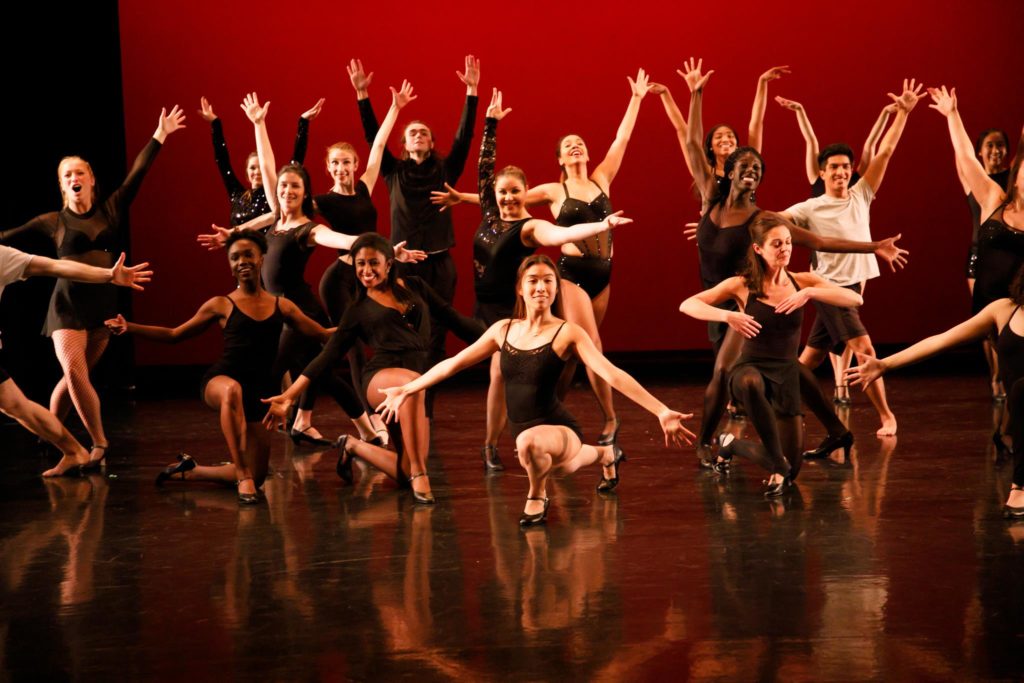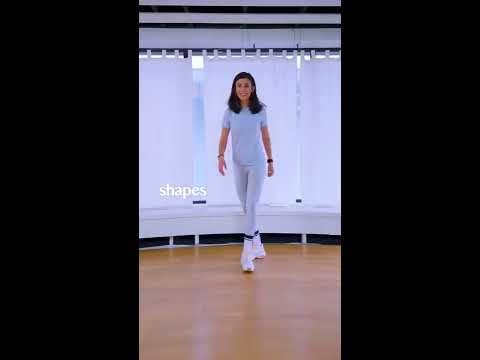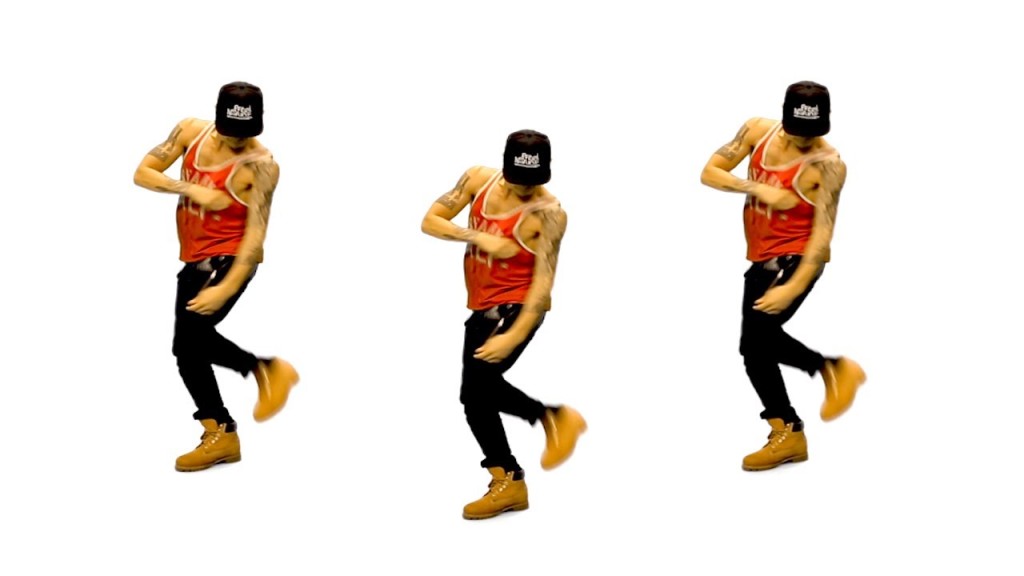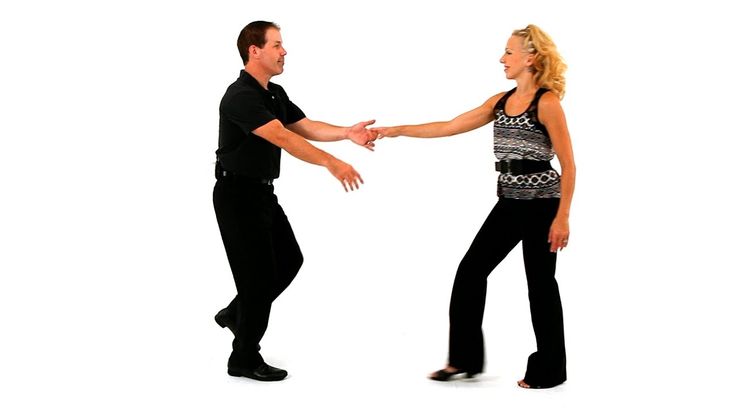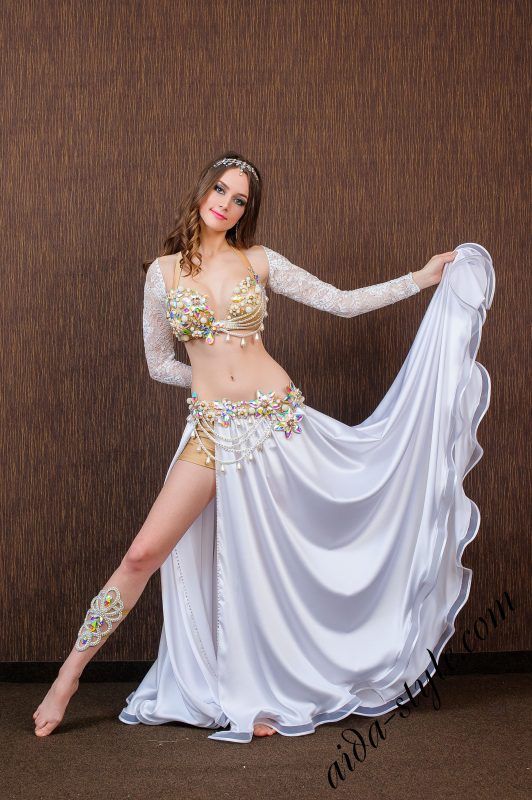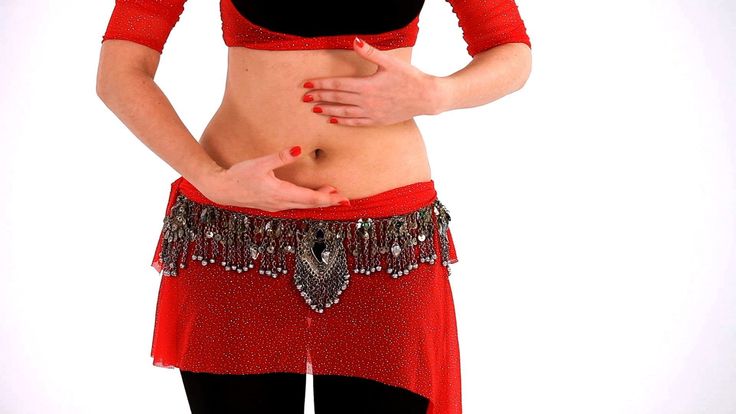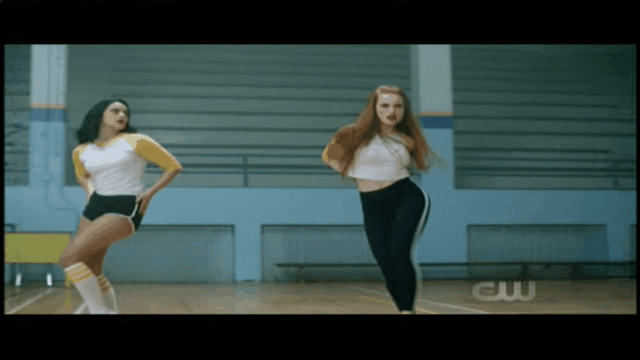How to belly dance at home
The Ultimate Guide to Learning Belly Dance at Home - Quirky Bohemian Mama
The Ultimate Guide to Learning Belly Dance at Home
How to learn belly dance at home.
A long, long time ago, before marriage and kids, I was quite the little belly dancer. I was 23, I worked part time, and lived with my parents. I had nothing but time to devote to learning belly dance. I danced and practiced FOUR HOURS and day. Four hours! Now I can't even bring myself to do drills for 10 minutes without freaking out that I'm not going to have enough time to finish dinner before the husband gets home from work.
I kind of stumbled into learning belly dance. I wasn't really familiar with it, nor did I know there were lessons for such a thing. I knew Shakira was supposed to be a belly dancer but I never really looked into what that was. One day I bought an East Coast Tribal instructional DVD on a whim, tried it out and I was hooked. I had to know more about this "belly dance".
I bought a 3-disc box set for beginners starring Neena and Veena and became obsessed.
Learning to make my body do things I had no idea it could possibly do made me feel like a freaking goddess and watching the progress of my strength and endurance build day by day was incredibly fulfilling. I gained confidence and sculpted my body into something I had always wanted!
| 23 year old me after a 40-lbs weight loss thanks to diet and belly dance! |
One day my boyfriend (now husband) and I came across a man playing a sitar outside a coffee shop and a wonderful friendship was created. He introduced us to drumming the djembe and doumbek and a belly dancer was born! We held small drum sessions every Sunday and I danced and taught other people how to dance if they wanted to learn. It was so much fun!
I still belly dance but I switched my focus to learning Russian Gypsy skirt dancing for the sake of more "authentic" renaissance faire entertainment. (I used to play Daniella Noir the Gypsy Queen at the Texarkana Renaissance Faire by the way).
(I used to play Daniella Noir the Gypsy Queen at the Texarkana Renaissance Faire by the way).
In my years of belly dancing I've learned that the point of belly dance isn't to learn how to make your belly roll or how to shake it like Shakira, or even to look good in a two-piece sequined costume.
Your goal should be to have fun gaining confidence, building strength, endurance, and mad body control.
▲▲▲▲▲▲▲▲▲▲▲▲▲▲▲▲▲▲▲▲▲▲▲▲▲▲▲▲
BEFORE YOU GET STARTED:
► I am not a professional belly dancer. I've been a belly dance enthusiast for several years and I love performing and spreading the joy of dancing. All opinions expressed are my own.
► Belly dance is for everyone. Get the idea out of your head that belly dance is only for beautiful, long haired women with perfect figures and impossibly flat tummies. I feel that prior dance experience of any kind helps, but still anyone can learn (and perform) belly dance. Men, women, full-figured, thin, young, old, black, white, brown, and everything in between!
Men, women, full-figured, thin, young, old, black, white, brown, and everything in between!
► There are many different forms of belly dance but the most common forms is Raqs Sharqi, but it's usually just called 'Egyptian Style' or 'Oriental'. There's also Turkish and American Cabaret. Often times these styles get mushed into one style of dance that many just simply refer to as "classic belly dance". Unless you're a belly dance expert, you probably won't even be able to tell the difference between any of these styles so don't stress too much about that right now.
| Dancer wearing a Belly Stocking™ under her costume. Click photo for original source. |
There's also Egyptian Baladi which is often performed in a long form fitting dress with a cane. As it's a very folky and traditional dance it is performed by many male dancers too!
American Tribal Style ® (ATS®) is sweeping the nations and it's little cousin, Tribal Fusion is the latest form of dance.
I feel it is very important to learn the fundamentals of belly dance by starting off with classic belly dance. After you're comfortable with your basics, then you can explore the other forms and have a blast doing it.
► You don't have to bear your tummy to dance. You can wear whatever you want and be as modest as you need to be - even if you decide to go pro and perform!
► Many professional belly dancers are going to tell you that you need to take actual classes from a pro in order to learn it right, but what they fail to realize is:
#1 Not everyone is striving to be a professional belly dancer. Some folks just want to do it for fitness and fun!
#2 Not everyone has access to belly dance lessons.
#3 There are dozens of belly dance instructional DVDs out there created by amazing teachers who specialize in teaching via television screen. Just like how you can teach yourself how to play the piano, knitting, or cooking, you CAN learn how belly dance at home!
__________________________________________________________
► Where to find free or cheap home lessons: Many professional belly dancers have YouTube videos that show you specific moves but some are nice enough to upload entire beginners lessons! Check out one of my favorite free online instructors HERE.
Bid for super cheap DVDs on Ebay and find very affordable belly dance instructional DVDs on Amazon. Heads up: you're not going to learn everything you need to know from just one DVD. There's SO much more to belly dance than just shimmying and hip drops. I recommend DVD series or box sets that will offer hours of instructions. When shopping for an instructional DVD make sure to buy one that is for total beginners and features a warmup and a segment on proper posture.
► Get a mirror: You'll need to be able to see yourself to see if your motions are on point and to make sure your posture is always in check. Since you probably don't have a giant dance mirror already set up in your home (lucky you if you do!) get a full length mirror and set it up beside your TV or computer or whatever you'll be using to view your lessons. You can find full length mirrors at most dollar stores for under $10.
► Attire: You don't have to wear fancy dancewear to practice. I usually wear a tank top and leggings or fitted "yoga pants". It's very important that you don't wear baggy clothes or long skirts because you'll need to be able to see the motions of your chest, hips, legs and feet in your mirror.
I usually wear a tank top and leggings or fitted "yoga pants". It's very important that you don't wear baggy clothes or long skirts because you'll need to be able to see the motions of your chest, hips, legs and feet in your mirror.
And I know you're ready for this one! Coin scarves! Everyone loves those things! Jingly coin scarves are in no way mandatory for learning belly dance but they are wonderful for hearing and seeing the effort of your motions. Coin scarves come in many different colors and the cheapest usually come in one size often fitting up to 40"to 45" hips. You can buy coin scarves for as low as $3 on eBay! They come right from China so it might take a couple weeks for them to arrive.
There are also quiet hip scarves (or belts) made with large sequins or fringe. Guys might like fringe belts a little better. Plus size hip scarves are also available to buy!
A piano shawl or any fringed triangle scarf is wonderful to wear around the hips as well.
No special shoes are needed, in fact you'll find most belly dancers dance completely barefoot.
► Continuing Practice: When you're ready to get serious about getting your moves down, you'll need to do drills regularly to build up the muscles required to perfect the motions. Since DVDs can only show you so much in an hour and thirty minutes, you'll need to practice moves, combos and steps over and over on your own. Get yourself a CD that features great classic belly dance music and practice at your own pace. Also, on the days you're feeling lazy, just listening to the music will make you want to get up and move!
When the basic lessons no longer challenge you, it's time to move up to intermediate level lessons. You can find many great intermediate lessons on YouTube and DVD as well.
► Adding Props: Once you've got your basic stances, movements, travelling steps and many combos down, you should try your hand at learning how to use common props like a veil or zills (finger cymbals). These can be found at affordable prices on eBay and Amazon.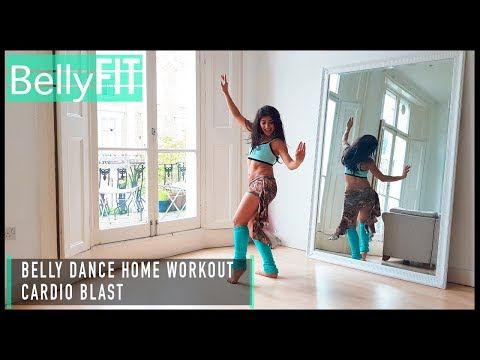 Make sure to check measurements before buying your props online! I bought a veil from eBay once based on the photo and when it came in ir qA 20" x 6". That's about long enough to wear as a hair accessory. Your veil should be a rectangle of no less than 3 yards of light material and beginner zills should be about 2.5" in diameter.
Make sure to check measurements before buying your props online! I bought a veil from eBay once based on the photo and when it came in ir qA 20" x 6". That's about long enough to wear as a hair accessory. Your veil should be a rectangle of no less than 3 yards of light material and beginner zills should be about 2.5" in diameter.
Jamil, male belly dancer performing with veil and cane.
▲▲▲▲▲▲▲▲▲▲▲▲▲▲▲▲▲▲▲▲▲▲▲▲▲▲▲▲
THE DOS AND DON'TS OF LEARNING BELLY DANCE AT HOME
DO practice at least twice a week.
DO NOT expect to become a belly dance prodigy overnight.
DO expose your belly if you want (no matter what it looks like)!
DO buy a costume if you want. It will make you feel a look amazing! (Guys too!)
DO NOT compare yourself to other dancers.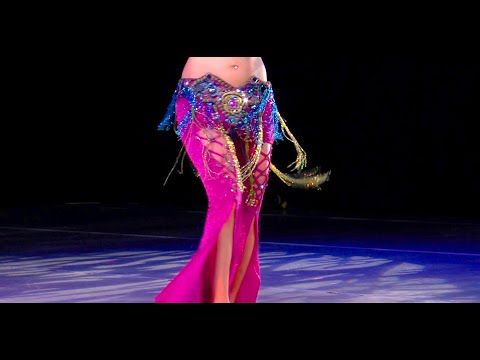
DO NOT jump into practice without proper warm ups.
DO carefully read the descriptions and reviews of any DVDs, props and costuming before you buy.
DO watch belly dance performances by professional belly dancers from all styles so you can see how it's done. There are thousands of videos on YouTube and tons of performances available on DVD.
DO NOT give up on an instructional DVD because it's too hard. Keep doing it until you get it. That's how you learn!
DO NOT declare yourself a pro belly dancer after going through one lesson.
DO consult a professional belly dancer if you feel you're ready to go pro. They can point you in the right direction of how to get started.
Gorgeous SIXTY year old belly dancer, Dee Orr from Shreveport, LA at the
2016 Texarkana Renaissance Faire. Scott Johnson Photography.
▲▲▲▲▲▲▲▲▲▲▲▲▲▲▲▲▲▲▲▲▲▲▲▲▲▲▲▲
MY TINY LIST OF RESOURCES
The History of Belly Dance
Plus Sized Belly Dancers
Belly Dance at Any Size - blog
DIY Belly Dance Everything
The Official Page for American Tribal Belly Dance
About Male Belly Dancers
Why You Should Belly Dance During Pregnancy - by me!
Talk With Other Belly Dancers
Belly Dance U - blog
Pin to share please :)
▲▲▲▲▲▲▲▲▲▲▲▲▲▲▲▲▲▲▲▲▲▲▲▲▲▲▲▲
How to Belly Dance in Small Spaces at Home – The Inner Dancer
It’s beautiful outside, but you’re inside and you need to practice! How can we make the best use of our space when we are at home?
There are definitely a lot of things to consider when we are practicing at home.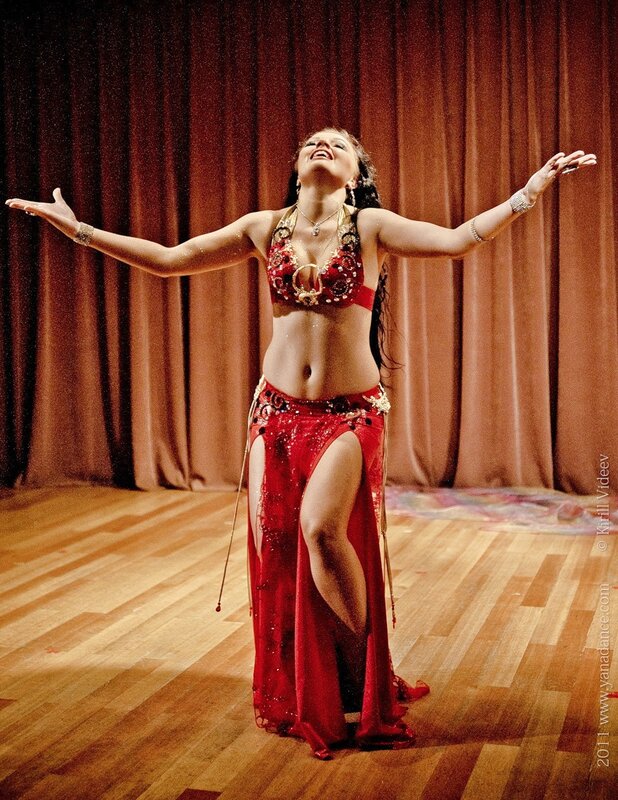 The first thing I would love for you to consider is to breathe. It allows us to focus and ground ourselves. It also gives us room to breathe during our very busy day and a chance to focus on what the task is at hand. And right now, that task at hand is dancing! Take a moment to breathe in deeply and let it out all the way.
The first thing I would love for you to consider is to breathe. It allows us to focus and ground ourselves. It also gives us room to breathe during our very busy day and a chance to focus on what the task is at hand. And right now, that task at hand is dancing! Take a moment to breathe in deeply and let it out all the way.
Setting up for an online class, follow along dvd or doing a free live classs with me all require just a little space to get your dance on!
Set up your video camera
If there are no pictures or videos it didn’t happen right?! One thing that can help you with practicing at home is setting up your video camera and recording yourself practicing, your rehearsal or the dance class your training for at home by yourself. It can help you achieve your goals, hold you accountable, helps you self-correct and self-teach.
When you start to learn the skill of watching your own videos and not going nuts about how you look and the negative stuff, but you detach yourself from the person on the camera and look at it more objectively you can really correct a lot of your techniques.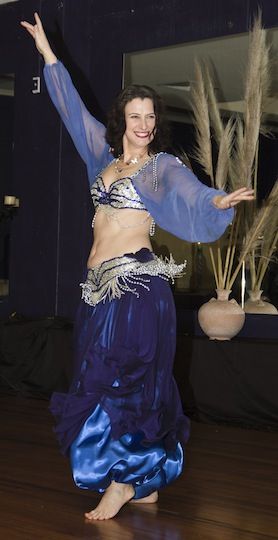 You actually know a lot more than you think you do. You can start to become your own teacher. We don’t always have the opportunity to have someone give us live feedback so the skill of training yourself on how to correct yourself is a really important one.
You actually know a lot more than you think you do. You can start to become your own teacher. We don’t always have the opportunity to have someone give us live feedback so the skill of training yourself on how to correct yourself is a really important one.
When you are reviewing your footage you can see mistakes that you keep on making. Now that you can identify it, you can find a solution. Video the entire session, not just the last 3-4 minutes of what you were working on. While you’re working on something it’s important to see it in process and it’s really hard to remember once the session is over. Video the lesson, then rewatch it and it will be so much easier to break it down. Plus, you have footage of what you are wanting to accomplish during that time and make sure you are holding yourself accountable to what you want to accomplish.
Bling it up
What’s wrong with dressing for the part? It can make you feel good on the outside and the inside.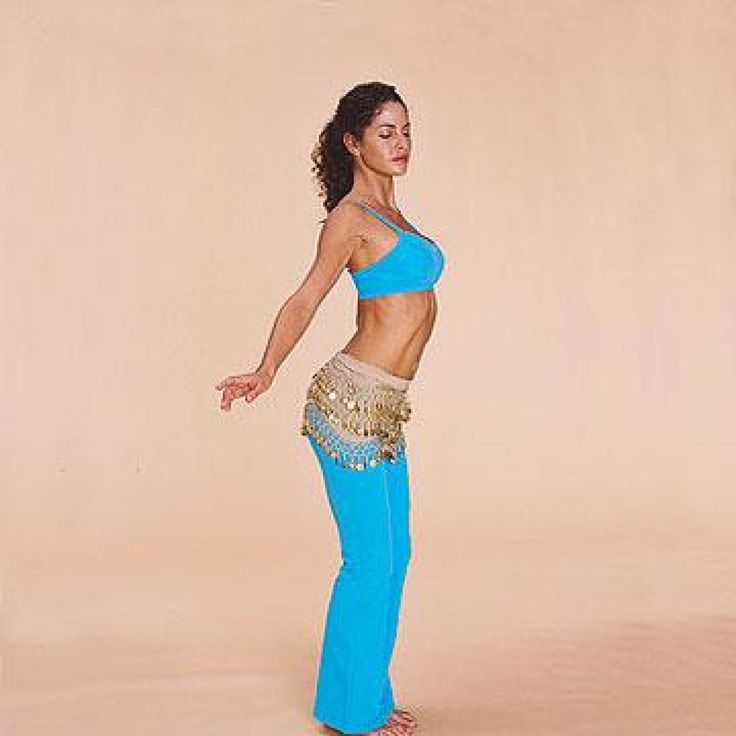 I always like wearing a little bit of lip gloss and sometimes I even put jewelry on like I’m going somewhere even when I’m not. You can wear your hip scarf with the glitz and glamour or break out a costume you have. If it makes you feel good, do it.
I always like wearing a little bit of lip gloss and sometimes I even put jewelry on like I’m going somewhere even when I’m not. You can wear your hip scarf with the glitz and glamour or break out a costume you have. If it makes you feel good, do it.
Set goals around your practice
If you really want to be effective and efficient with your time it’s going to be essential to set goals for your practice. You can set 1-2 goals per practice and that is plenty especially if you have a short amount of time to practice like 5 minutes. But even if you have an hour you can really dive into your goals and don’t need to make too many. Keep it small. Remember small changes over a long amount of time makes big impacts.
If you are taking a class with your instructor online your teacher should be instructing you on how to guide your practice at home and what they would like you to accomplish in those sessions so you can bring it back to the next lesson.
Dance like you mean it
How you train is how you are going to perform. If you’re practicing at home and you’re all hunched over and droopy, you need to spruce yourself up and get yourself back into the posture and the feeling of how you want to present yourself when you’re performing. It’s so important because “practice makes permanent.” If you’re feeling less energized, you’re training your body to be “that way” and that’s how it’s going to show up when you perform on stage. Knowing that “practice makes permanent,” we want to practice effectively. Keep that posture correct, use the right techniques, and practice your facial expressions.
The challenge of space
One huge challenge of practicing at your house is space. You either have the space to practice or you don’t. So let’s go over a couple of scenarios that will help you utilize your dancing area to the fullest.
Belly dancing in the Hallway
One area that is probably the most underutilized is your hallway. While hallways don’t tend to be much wider than our shoulders, we don’t have to feel like we are hitting the walls while dancing in there. Maximize the space by turning to the side and practicing down the length of the hallway.
While hallways don’t tend to be much wider than our shoulders, we don’t have to feel like we are hitting the walls while dancing in there. Maximize the space by turning to the side and practicing down the length of the hallway.
Some of the best things to practice in the hallway:
- Arm paths
- Travel patterns – grapevine
- Turns
Practicing in a hallway can also help with learning small spaces and understanding boundaries that will help when you’re dancing along the edge of a stage. Turn yourself to the side and take advantage of the space by practicing turns and traveling moves and full stretched out, beautiful arm paths.
Belly dancing in the kitchen
Another place you might find yourself wanting to practice is your kitchen. This area is good for very small traveling patterns as well as isolations that perhaps you would just keep in place. No matter the size of the kitchen, big or small, there are two specific moves you can practice.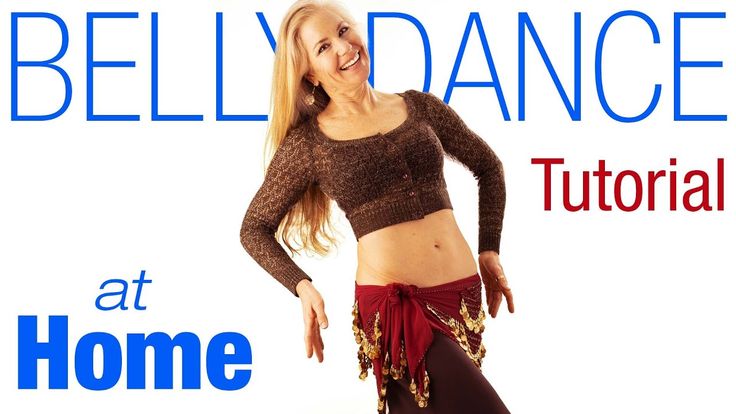
One is the shimmies! You can do this while washing the dishes. Just don’t try the one legged shimmy while washing your most precious china. HA! If you’re able to wash your dishes or multitask and still practice your shimmies, then that technique can start to feel more natural in your body because you’re not focusing on it as much while you’re doing it.
The second one is small traveling patterns. The higher you go on your feet, the more you can do in small spaces. When you’re in relève you can get your feet closer together. The minute that you drop down and go into a lower relève you are taking up more area of the floor. When you need to travel smaller, just knock it up into a higher relève so you can do these minute patterns.
If you have a super small kitchen keep your travel movements small and if you have a larger kitchen don’t be afraid to really expand then and take up all the space.
Try belly dancing in the bathroom
Practicing in the bathroom is a whole lot of fun.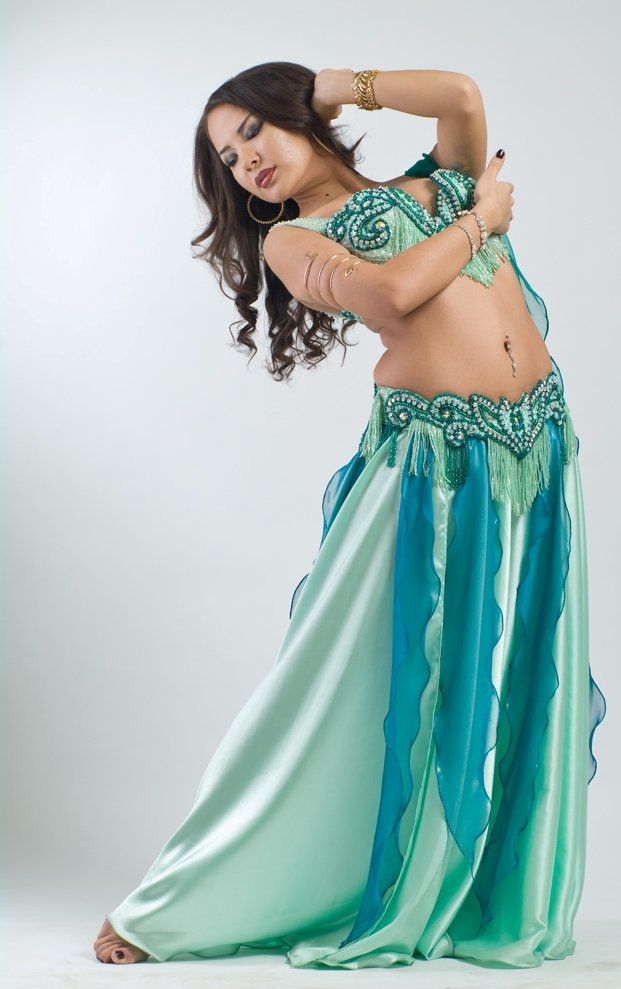 I know it sounds really weird, but you might not be thinking what I’m thinking. What I’m talking about with practicing and drilling in the bathroom is facial expressions and relaxation. I get this question a lot from students about how to practice relaxing and having natural facial expressions while dancing.
I know it sounds really weird, but you might not be thinking what I’m thinking. What I’m talking about with practicing and drilling in the bathroom is facial expressions and relaxation. I get this question a lot from students about how to practice relaxing and having natural facial expressions while dancing.
You’ll have a mirror typically in a bathroom so you’re able to see your facial expressions that you’re making. You can also even do it while doing your makeup.
Belly dancing in the bedroom
The bedroom is an interesting area because it typically has the largest piece of furniture in it, which is your bed. So how do we use it to our advantage? If you like to do floor work or like to think outside of the box when learning how to travel, try rolling over your bed. You can practice rolling even though it’s a soft surface instead of a firm one like the floor but you can still practice some moves. You can practice moving from one side of the bed to the other.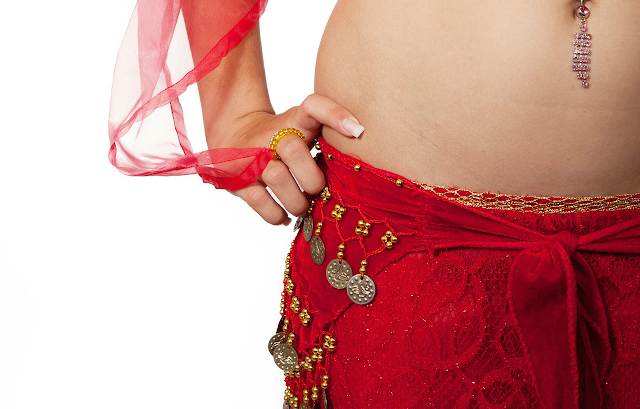 Or you can travel from one corner to the other.
Or you can travel from one corner to the other.
You’ll also maybe have a mirror in the bedroom which allows you to see yourself practicing your traveling across the bed and can give you some feedback on it.
Belly dancing on carpet
Dancing on carpet can be interesting, especially if you need to make turns. What I found, because my house used to be about 75% carpet, is I could wear socks to help provide a barrier between your foot and the carpet and make turning a little smoother. If you don’t want to wear socks while practicing dancing you can also use your dance shoes on carpet as well. That’s something to consider so that it provides you a mini dance surface in between your feet and the carpet.
If you’re dancing on a floor that doesn’t have carpet you still might consider wearing your socks or dance footwear if you experience pain barefoot. When wearing socks on non carpeted floors I wear yoga socks so there is a little bit of traction and you don’t slip and hurt yourself.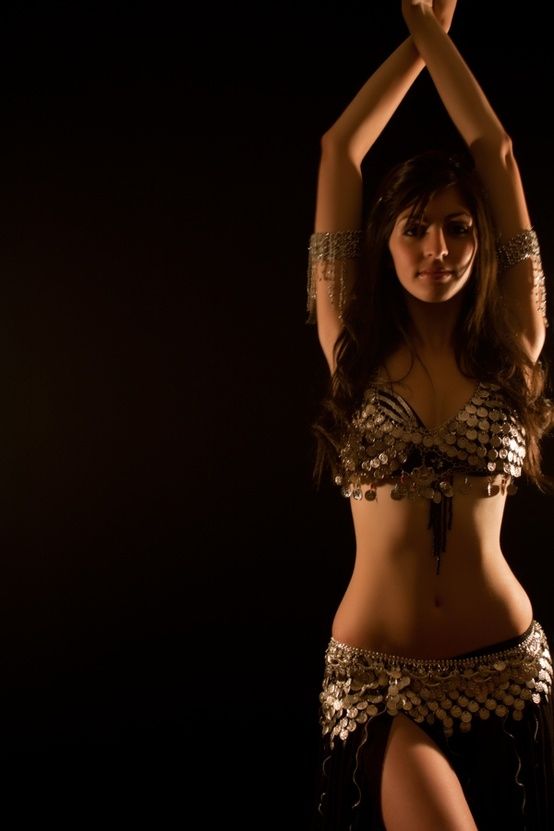
My feet sometimes get super clammy on the smooth surfaces so it’s harder to turn or do a particular travel movement so I take baby powder and pat it onto the bottom of your foot. It will dry up the moisture and provide a soft surface so you can travel across the floor a little easier but you’re not slipping and sliding. Avoid slipping and sliding because then you have to catch yourself at the end of a movement and it can put too much pressure on your knees.
Other ways to practice at home:
When you’re tired, sit and practice your upper body work (chest circles, chest slides, arm circles…). You don’t have to
Floorwork
Check out the video above to see the way I dance in a crowded living room! Follow along with me – Timestamp: 13:00
Don’t let your small space at home deter your belly dancing practice! You can utilize each space in your house for different dance techniques. Get creative in your space no matter what size it is. Enjoy dancing in new spaces around the house and really break out of your normal dance comfort zone. Each space is a fun new place to explore with your belly dance moves and you can really make the most of your home. What’s the craziest place you’ve ever practiced belly dancing? Take your home belly dance practice up a notch with beginning, intermediate or even advanced online belly dancing classes. You can do one day or ongoing classes right from the comfort of your own home!
Enjoy dancing in new spaces around the house and really break out of your normal dance comfort zone. Each space is a fun new place to explore with your belly dance moves and you can really make the most of your home. What’s the craziest place you’ve ever practiced belly dancing? Take your home belly dance practice up a notch with beginning, intermediate or even advanced online belly dancing classes. You can do one day or ongoing classes right from the comfort of your own home!
If you are interested in online classes you can take your first live class with us for FREE with our beginner Belly Dance class! You can pick a time that works for you and dance with me for 60 minutes!
how to learn belly dancing at home
Do you want to learn how to dance belly dance correctly? It is enough to learn a few basic movements and add a special mood to them. We have compiled detailed instructions on how to learn belly dancing so that you can dance no worse than a Colombian pop star.
Tatyana Shamanina
Tags:
weight loss
Dancing
How To
Slim stomach
incendiary dance
Shutterstock
How to learn to dance a beautiful oriental belly dance at home? Of course, it's not easy. Nevertheless, it is easier to dance it at home than any other dance style. Especially if you have never been into dancing before.
Basic movements
- Starting position
Stand with your feet together and your arms at your sides. Then slightly bend your knees and raise your chest - this is the starting position for starting any movement in the belly dance. For smooth movements in the dance, you need to tighten the muscles of the lower abdomen and engage the pelvis.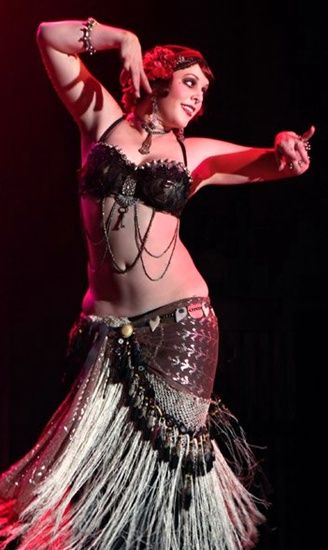
- Hip lift or shimmy
Bend both knees. Then straighten your right leg to lift your right thigh up. Then lift the pelvis up to the chest, while the upper body should not be involved. The heels must not be lifted off the ground during this movement. When you "pull" up your right hip, lower it and repeat the movement with your left. Namely, straighten your left leg and lift your left hip up.
- Fast Pace Hip Lift
Repeat hip lift on both sides at a faster pace. Do not pause - first lift the right thigh up, and then smoothly - the left. At an accelerated pace, the hips will swing quickly from side to side - now you know how to perform the shimmy movement.
- Hip Drop
Start in the starting position with the right foot on the floor and the left foot slightly extended, about a few inches forward with the heel raised. Then bend both knees and keep your chest and arms up. Then straighten your left leg, lift your left thigh and immediately lower it to the level of your right thigh. At the same time, keep your right leg bent during the movement. Next, repeat the mini-bunch at a fast pace so that it looks smooth, without pauses and breaks.
Then bend both knees and keep your chest and arms up. Then straighten your left leg, lift your left thigh and immediately lower it to the level of your right thigh. At the same time, keep your right leg bent during the movement. Next, repeat the mini-bunch at a fast pace so that it looks smooth, without pauses and breaks.
- Belly
How to quickly learn belly dancing at home? Easy, the main thing is not to miss a single basic movement, including the “tummy”. Starting position - feet are on the floor, the upper body is raised, and relaxed arms are at the sides. Then slightly bend your knees and tighten the muscles of your upper abdomen, pulling them in. Then relax your stomach and tense only the muscles of the lower abdomen. Consistently alternate, pulling in the lower, then the upper press. Repeat the movement smoothly and without pauses.
- Try a breast lift
The last basic movement that will help you understand how to dance belly dance correctly. The starting position is a raised chest, arms are located on the sides, legs are together, and the feet are on the floor. Next, we pull the chest up to the end so that the shoulder blades seem to slide along the back. Then lower your chest back down. Repeat the link at a fast pace, while alternately contracting the abdominal muscles.
The starting position is a raised chest, arms are located on the sides, legs are together, and the feet are on the floor. Next, we pull the chest up to the end so that the shoulder blades seem to slide along the back. Then lower your chest back down. Repeat the link at a fast pace, while alternately contracting the abdominal muscles.
Why do home belly dancing?
Oriental dance will help not only lose weight, but also cope with various pains.
- Back and Joint Pain
Gentle movements increase the flow of synovial fluid (natural lubricant) in the joints, and also tone the back muscles, which improves posture and prevents back pain.
- Help in losing weight
How to learn belly dancing at home and lose weight? Easy - one hour session will help burn up to 300 calories.
- Preparing for childbirth
Belly dancing tones the abdominal and pelvic muscles involved in childbirth.
- Against stress
Oriental belly dance is not only beautiful, but also healing. The dance feels like a session of physical and psychological relaxation.
- Period Pain
Soothing dance bands help reduce pelvic congestion, which improves circulation and relieves PMS pain.
Learning belly dance at home - video lessons, basic rules
Sophie Shine
Muscular gymnastics specialist, medical psychologist, Сolady magazine expert
Subscribe
Reading time: 4 minutes
It is quite possible to learn belly dancing at home. We will tell COLADY about what is needed for this.
Pixabay PhotoHow to start learning belly dance for beginners at home - paraphernalia and basic rules
Belly dancing requires a woman to be able to relax those muscle groups that are not involved in work at the moment. Only in this way can a dancer perform dance movements for thirty minutes.
Only in this way can a dancer perform dance movements for thirty minutes.
Belly dance lessons will require lady to form her own sexual image as a dancer. You can completely immerse yourself in the world of oriental dance only by creating your own image. An important role here is played by costume, jewelry and, of course, makeup. All of the above will focus on the sexuality and femininity of an oriental dancer.
- In order to choose the right clothes for dancing, you should know that in the first months of the figure of a woman will change significantly . The waist will become more refined, and excess fat will disappear. It is recommended to purchase some elements of the attire for oriental dances after some time has passed.
- For beginners, belly dance is better to dance in combination short top with breeches or leggings.
- Later, a woman can complete her look with a loincloth with coins , which create the intended mood during training.

- With regard to shoes for belly dancing, we recall that for a long time there has been a tendency to dance oriental dances barefoot, thus marking an inseparable connection with the Earth. For women who don't want to dance barefoot, can wear ballerinas, shoes or socks.
In order to harmoniously and correctly perform belly dance, a woman must be well versed in the styles of oriental dances, know their differences, and also know what costume, music and vocabulary correspond to a certain style.
Video belly dance lessons for beginners - basic movements
Video: belly dance - first lessons
- A notable element of belly dance is "rocking chair".
 To perform this movement, a woman should rise on tiptoe with her legs placed together, bend them slightly at the knees and mentally draw a vertical line through the navel. Along this line, you need to smoothly move your hips so that the navel remains in place. You can do dance elements up - down or forward - backward.
To perform this movement, a woman should rise on tiptoe with her legs placed together, bend them slightly at the knees and mentally draw a vertical line through the navel. Along this line, you need to smoothly move your hips so that the navel remains in place. You can do dance elements up - down or forward - backward.
- in the vertical plane , put your feet together, rise to your toes and bend your knees a little. In turn, we pull up to the armpits of the thigh so that the location of the navel remains unchanged. This element of the dance can also be performed moving forward.
To perform movements in a perpendicular plane (forward - backward) we stand on a full foot, bend our knees a little. Bending the lower back as much as possible, we take the pelvis back. We lead it forward and pull the pubis to the navel. Plastically moving the hips, we describe a semicircle. The center of the circle is in the navel.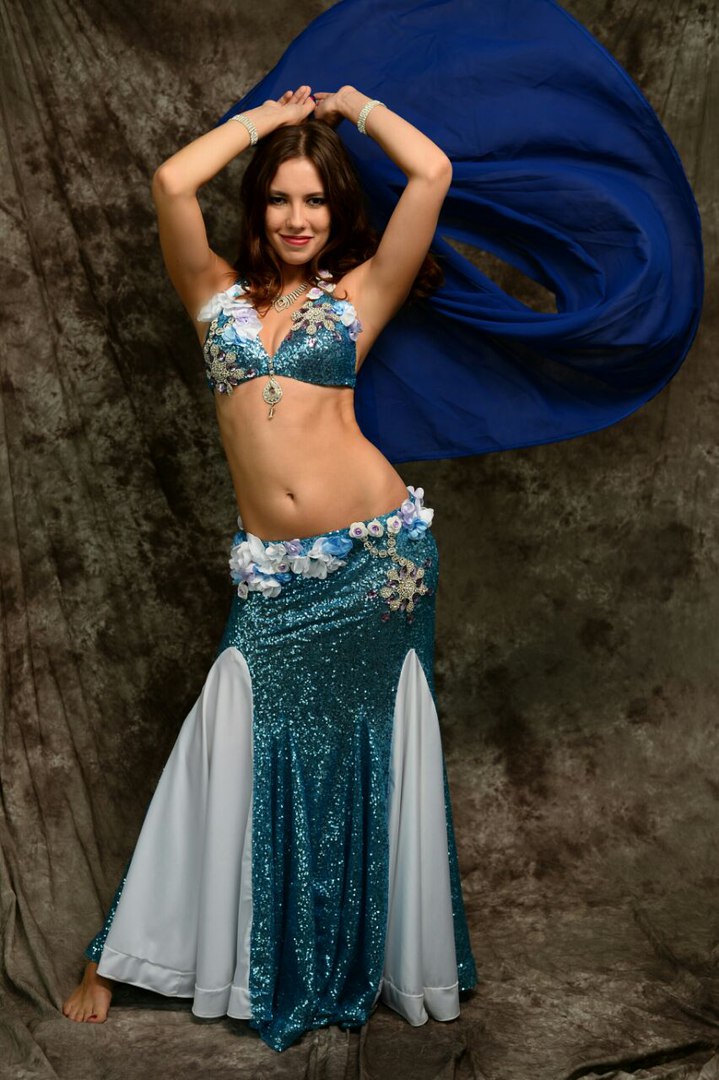 Accelerating the pace, we switch to shaking the stomach.
Accelerating the pace, we switch to shaking the stomach.
- The next element of belly dance is “pendulum” . To perform the exercise from top to bottom, up to the armpit, we raise the right thigh, bring it to the right and lower it down, raising the left thigh to the armpit.
Pendulum from below - up is performed by bringing the right thigh further to the side. By lifting the heel off the floor, the thigh is pulled towards the armpit. Diagonally lower the right thigh, lifting the left thigh up to the armpit.
- Hip circles. Don't forget - while dancing the element, you need to make sure that the back remains straight.
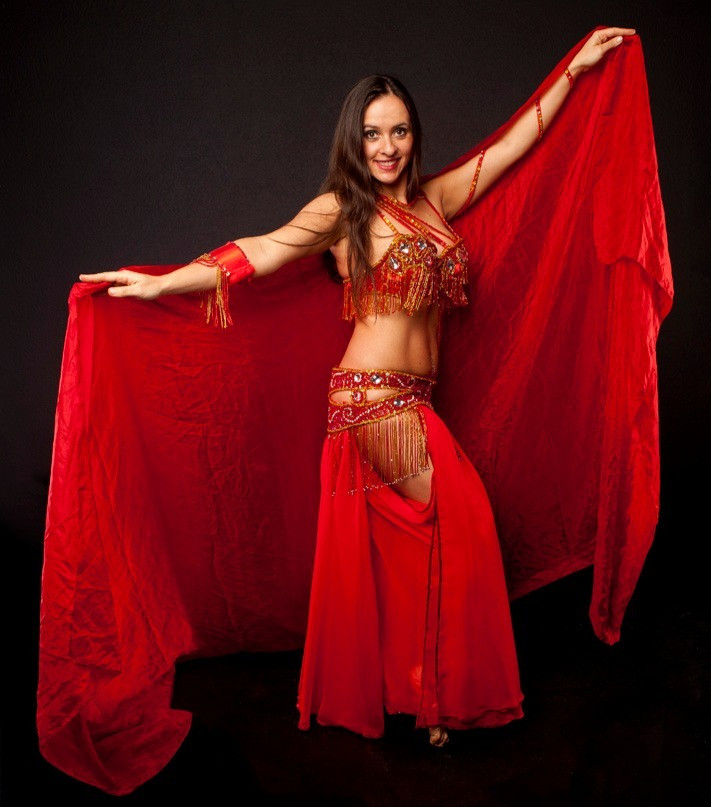 In the horizontal plane, we mentally imagine a circle for ourselves. We strive to outline it from behind with the buttocks, bending the lower back as much as possible. In front, you need to get the pubis on the stomach as much as possible.
In the horizontal plane, we mentally imagine a circle for ourselves. We strive to outline it from behind with the buttocks, bending the lower back as much as possible. In front, you need to get the pubis on the stomach as much as possible. - Reset wheels. Describe a circle and, pulling back the pelvis, perform a hip drop from top to bottom. On the following laps, the movement continues without stopping. Circles can be horizontal, vertical, large, medium and small. If you try to make circles in the frontal plane, you get a new movement.
- Dance element “Wave”. It should only work the hips. The upper body is immobile. To perform the element, we stand on high half-fingers, half a turn towards the viewer. In the vertical plane, we imagine a circle, the axis of which passes through the femurs. In the direction from below - forward - up - back, we try to describe it with our hips. The execution of this element is possible with advancement to the side or forward.

